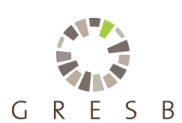
Sustainability reporting metrics are getting closer to allowing easy comparisons of companies over time — which investors like. The recent release of the latest Global Reporting Initiative G4 standard has again focused many managers’ attention on the perennial issue of sustainability reporting. When first envisioned in the 1990s, sustainability reporting seemed to be a logical extension of traditional financial reporting. But imitating financial reporting was easier said than done.
The dream of a single nonfinancial reporting standard is that sustainability metrics can do what financial metrics do: offer easy comparisons among companies over time. For example, The Coca-Cola Co.’s price-to-earnings ratio, when compared to PepsiCo’s, tells investors something about the relative attractiveness of each company. But it’s important to remember that financial metrics get their relevance from relative performance. Any MBA will tell you that financial ratios should be used only to compare companies with similar characteristics. That usually means limiting ratio analysis to companies in the same industry. Comparing financial data from Tyson Foods with data from Cisco Systems is likely to get an investor in trouble. Comparing companies using nonfinancial metrics is even more problematic due to the fact that sustainability measures cannot be reduced into simple dollars, yen, or Euros.
Read the full article by Gregory Unruh (the Arison Group Endowed Professor at George Mason University in Fairfax, Virginia, and the MIT Sloan Management Review’s guest editor for the Sustainability Big Ideas Initiative).



